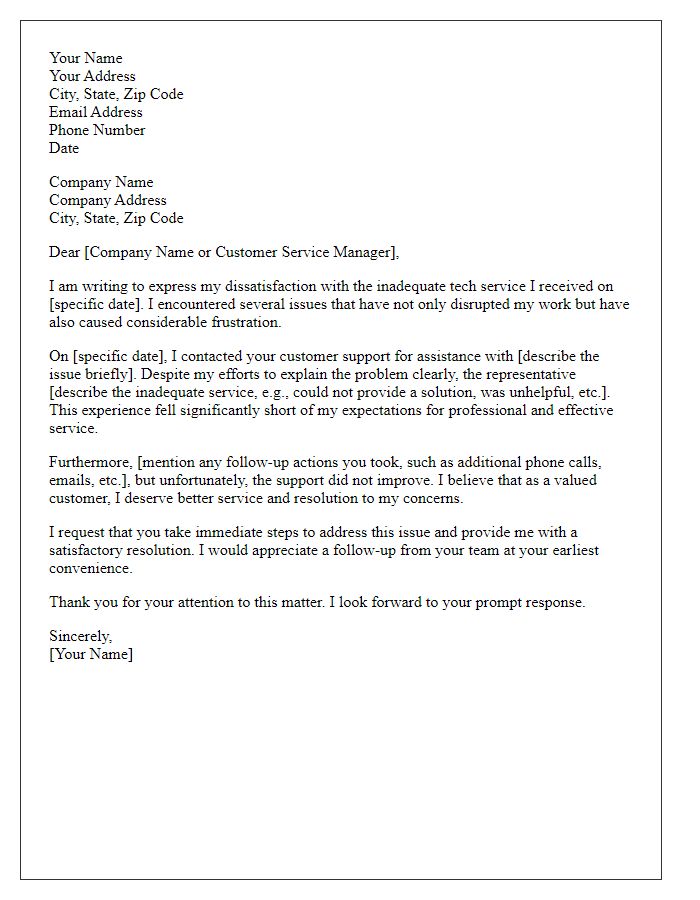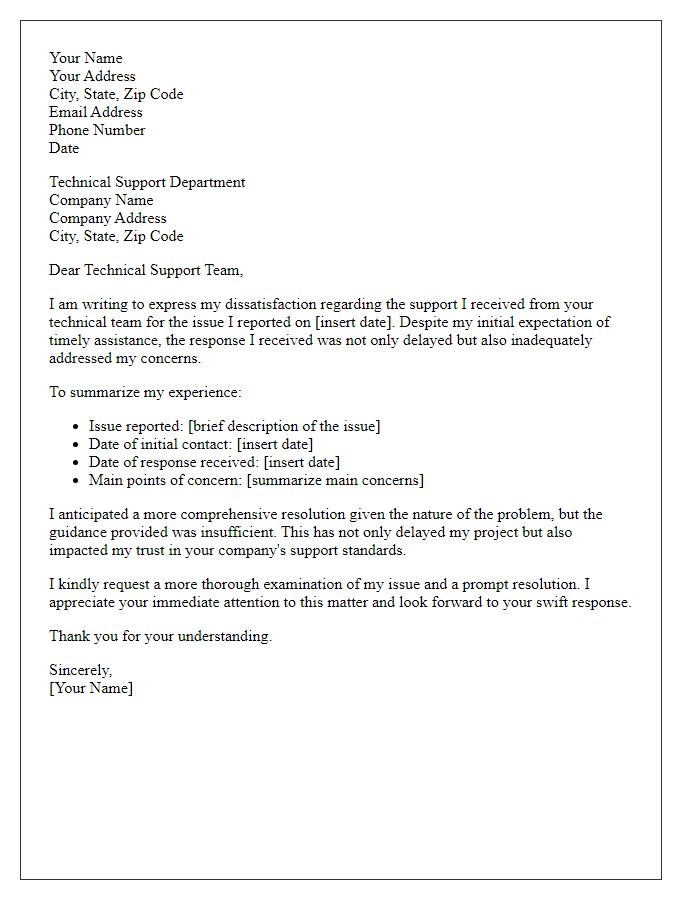Are you frustrated with the tech service you've recently received? You're not alone; many customers face challenges when seeking help for their devices. Writing a complaint can be a constructive way to express your concerns and possibly resolve the issue at hand. If you're interested in crafting an effective letter to voice your dissatisfaction, keep reading for a helpful template!

Clear description of the issue.
The recent experience with the tech support service provided by XYZ Corporation resulted in significant inconvenience. On June 15, 2023, I contacted the support team regarding severe connectivity issues with my home Wi-Fi router, a model RT-AC88U. The call lasted over an hour, during which representatives suggested multiple troubleshooting steps, including resetting the device and adjusting channel settings. Despite following all recommendations, the intermittent disconnections continued, with performance dropping to speeds below 1 Mbps, far below the advertised 100 Mbps. The following day, I scheduled a technician visit, but no one arrived during the allocated time frame. Unfortunately, the lack of resolution and poor communication has left me frustrated, impacting my ability to work remotely effectively.
Customer account or reference details.
Customer account information can play a crucial role when addressing complaints regarding tech service, ensuring efficient resolution. Specific identifiers, such as account numbers (typically a 12-digit alphanumeric code) or reference numbers (commonly a 10-digit unique ID), assist support teams in accessing service records quickly. These details may include the name associated with the account, the email address used for registration, and the date of the initial service request (e.g., June 15, 2023). Clear documentation of previous communications, including ticket numbers issued during past interactions, can further streamline follow-up processes and enhance the overall customer experience.
Impact on user experience or business operations.
Customer complaints regarding technical service can significantly impact user experience and business operations. Delays in service response times, such as those exceeding 24 hours for critical issues, can lead to productivity losses, especially in sectors reliant on IT support. The inability to access essential software tools during peak business hours can result in revenue losses, estimated at thousands of dollars per hour for larger companies. Negative experiences can also tarnish brand reputation, with 80% of dissatisfied customers sharing their experiences online, potentially deterring new clients. Furthermore, ongoing issues may lead to increased case escalations, consuming valuable resources and extending resolution times, exacerbating user frustration and operational inefficiencies.
Proposed resolution or desired outcome.
Many customers seek satisfactory resolutions to issues faced with tech services, particularly those involving software support or hardware malfunctions. Desired outcomes often include timely responses, effective repairs or replacements, and clear communication throughout the process. Customers frequently articulate the need for compensation, such as refunds, discounts, or future service credits, to acknowledge the inconvenience caused. Some may also request improved service guarantees or assurances that future issues will be resolved more efficiently. Ultimately, a promised follow-up within a specific timeframe can significantly enhance customer satisfaction and rebuild trust in service quality.
Contact information for follow-up.
Customer complaints regarding tech services often involve issues such as delayed responses, unsatisfactory resolutions, or poor communication. Contact details, including phone numbers and email addresses, are essential for follow-up interactions to ensure timely updates. Providing a direct line to a service manager or a dedicated customer support team can facilitate resolution. Important variables include service request numbers or ticket IDs, which help track complaint status. Clear identification of the affected product or service, including model numbers and purchase dates, can enhance the context of the issue being reported.
Letter Template For Customer Complaint About Tech Service Samples
Letter template of complaint regarding inadequate tech service experience.

Letter template of concern over unprofessional tech service interaction.












Comments